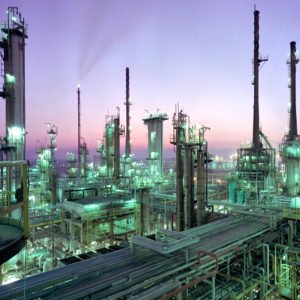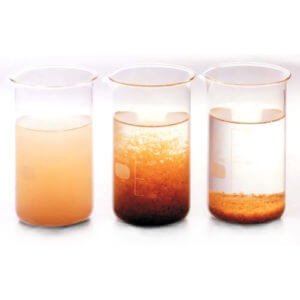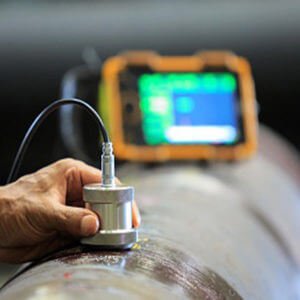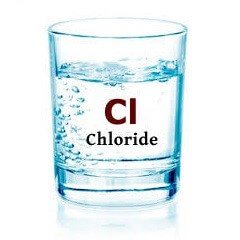

Raw water treatment
Source water for refineries typically needs to be treated before being used in different processes. The type of treatment depends on the quality of the source water and its ultimate use in the refinery. Turbidity, sediments and hardness are examples of source water constituents that may require treatment.
Water having a high mineral content is generally referred to as ‘hard water’ and has a tendency to form scale. Calcium salts are deposited as scale when water is heated causing a decrease in heat transfer rates in heat exchangers (heaters and coolers). Both calcium and magnesium salts form scale upon evaporation of water in steam-generating equipment. These deposits not only reduce heat transfer rates but also restrict fluid flow. Removal of calcium and magnesium from water is referred to as softening, and the treatments commonly used include lime-soda, phosphates, ion exchange and reverse osmosis.
Other contaminants that could be present in raw water and their removal methods are shown in Table 1.
| Removal methods | Problem | Contaminant |
| Coagulation, settling and filtration | Makes water cloudy and deposits in water lines and process equipment | Turbidity |
| Softening, distillation, surfactants | Primary source of scale formation in heat exchangers and pipe lines | Hardness |
| Lime and lime-soda softening, Zeolite softening Dealkalization by anion exchange | Causes foaming in steam systems and attacks boiler steel. Bicarbonate and carbonate produce carbon dioxide in steam which is highly corrosive | Alkalinity |
| Demineralization, distillation | Adds to the solids content of water and combines with calcium to form calcium sulfate scale | Sulphate |
| Demineralization, distillation, desalination (if sea water is being used) | Adds to solids content and increases the corrosive properties of water | Chloride |
| Anion exchange resins, distillation | Scaling on heating and cooling equipment and pipelines | Silica |
| Aeration, coagulation and filtration, lime softening, cation exchange | Discolors the water and precipitates in water lines and process equipment | Iron and magnesium |
| Oil/water separators strainers. coagulation and filtration. Diatomaceous earth filtration | Source of scale, sludge and foaming in boilers. Impedes heat exchange. Undesirable in most processes | Oil |
| Deaeration, sodium sulphite, corrosion inhibitors | Corrosion of water lines heat exchange equipment boilers, return lines, etc. | Oxygen |
| Aeration, chlorination, highly basic anion exchange | Cause of ‘rotten egg’ odor. Corrosion, toxicity | Hydrogen sulphide |
| Processes which decrease dissolved solids content will decrease conductivity. Examples are demineralization, lime softening | Conductivity is the result of ionizable solids in solution. High conductivity can increase the corrosive characteristics of a water | Conductivity |
| Various softening process, such as lime softening and cation exchange by zeolite, will reduce dissolved solids. Demineralization, distillation | ‘Dissolved solids’ is the measure of total amount of dissolved material. High concentrations of dissolved solids are objectionable because of process interference and as a cause of foaming in boilers | Dissolved solids |
| Sedimentation. Filtration, usually preceded by coagulation and settling | ‘Suspended solids’ is the measure of undissolved matter. Suspended solid plug lines, cause deposits in heat exchange equipment, boilers, etc. | Suspended solids |
Use of raw water in refineries
The required degree of water purity depends on the particular use. Preliminary treatment of all raw water entering a plant may include screening and sedimentation to remove suspended solids, but subsequent treatment will depend on the ultimate use for each water system. A typical plant water supply might be separated into process, boiler feed, cooling, potable, fire water and utility water systems.
Brief descriptions of the different water uses in refineries are given below.
Process water
In refineries, water is typically used for various purposes where the water is closely contacted with the hydrocarbons. Softened water is usually used for these purposes.
Boiler feedwater
The boiler feedwater (BFW) required for the generation of steam in a refinery needs to be treated prior to use. The higher the steam pressure being generated, the higher the purity of the BFW required. Ordinarily water is treated by the limesoda process and further purified by ion exchange or by hot phosphate treatment in order to produce boiler feedwater. Reverse osmosis can also be used to soften the water.
Typically, a purge stream is removed from the water purification systems in order to prevent the buildup of contaminants. This purge stream is sent to wastewater treatment and is replaced by fresh makeup water.
Cooling water
Water-cooled condensers, product coolers (heat exchangers) and other heat exchangers can use a large amount of water in a refinery. Some refineries use air coolers, where the process stream is exchanged with air prior the being sent to a cooling water heat exchanger. This will minimize the use of cooling water in the refinery.
Some refineries use a once-through system where the incoming water is exchanged against the process fluid and the warmer cooling water is then returned to the source of the water. However, if water is a scarce commodity at a particular location it may be preferable to recirculate the water through a cooling tower and then back to the process. In these circulating systems water is supplied at about 90° F and returned to the cooling tower at a maximum of about 120°F.
.
Some water treatment is necessary even for oncethrough cooling systems to prevent scale formation, corrosion, and slime and algae formation. The extent of treatment required for circulating systems is much greater since impurities are concentrated in the system as evaporation losses occur. In cooling tower systems, a build-up of salt concentration is unavoidable since water is evaporated in the cooling tower. Make-up water is required to replace these and other losses.
Sea water has been used successfully as cooling water especially in coastal areas with fresh water shortages. Cathodic protection systems employing magnesium anodes located in the floating head and channel of exchangers prevent excessive corrosion.
Deposits are minimized by restricting cooling water temperature increase below the point where the calcium salts begin to precipitate.
Potable water
Potable water is required for use in kitchens, wash areas and bathrooms in refineries as well as in safety showers/eyewash stations. City water or treated groundwater can be used for this purpose.
In remote locations or in small towns a portion of the treated water from the plant softening unit may be diverted for potable water use. The treated water must be chlorinated to destroy bacteria, and then pumped in an independent system to prevent potential cross-contamination. Potable quality water may also be required in some specialist chemical operations (e.g. as a diluent).
Fire water
The requirements for fire water in refineries are intermittent, but can constitute a very large flow. Often, refineries collect stormwater from nonprocess areas and store it in a reservoir dedicated to the fire water system in the plant. Provisions are typically made for a connection (for use in emergency situations) of the fire water system into the largest available reservoir of water. Usually this is the raw water supply since fire water requires no treatment. Sea water or brackish water is often used as fire water by plants located along coastal areas.
Utility water
Utility water is used for miscellaneous washing operations, such as cleaning an operating area. It should be free from sediment but does not require any other treatment.
Table 1 shows the typical impurities in various types of water and the processes generally used to remove them.



